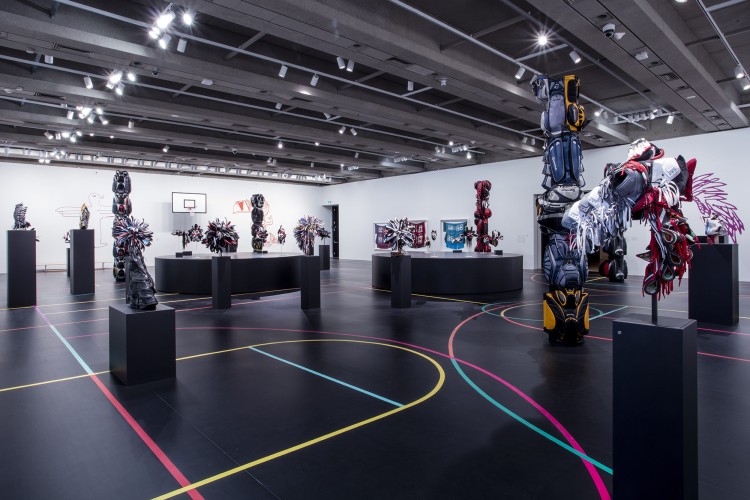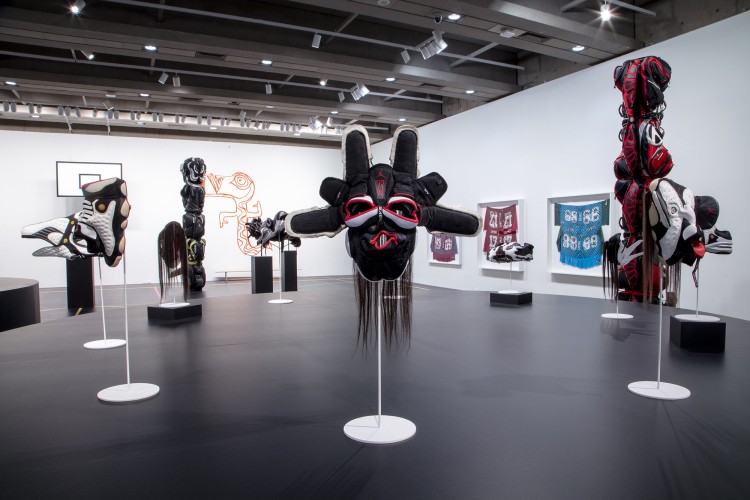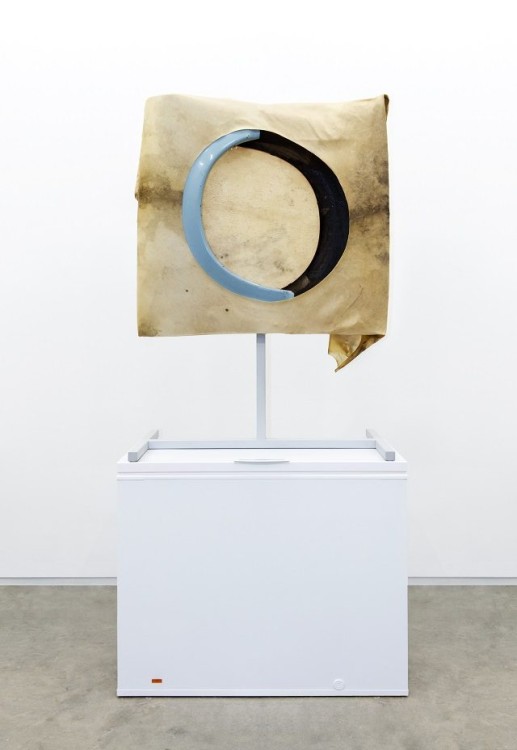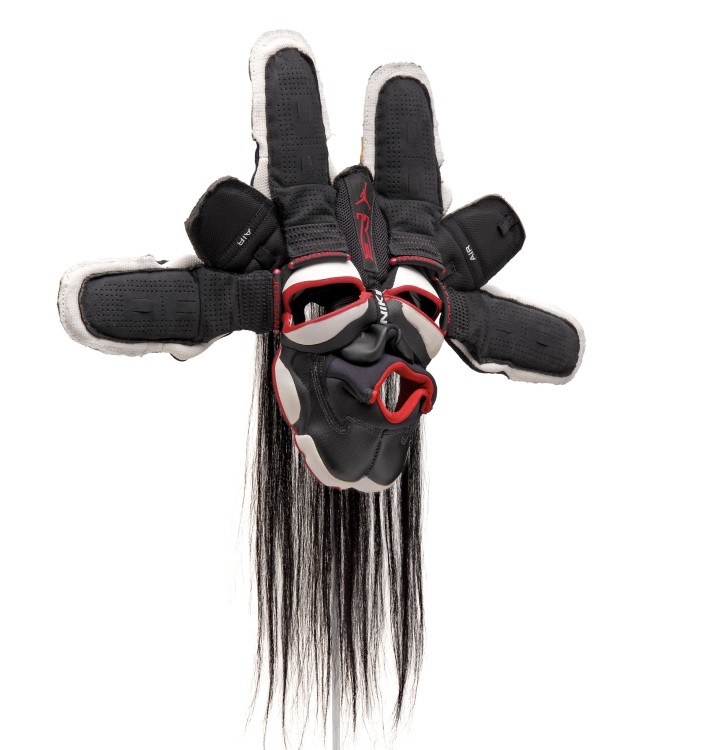Reimagining the totem
Hear Brian Jungen discuss the meaning behind the totems in Brian Jungen Friendship Centre.
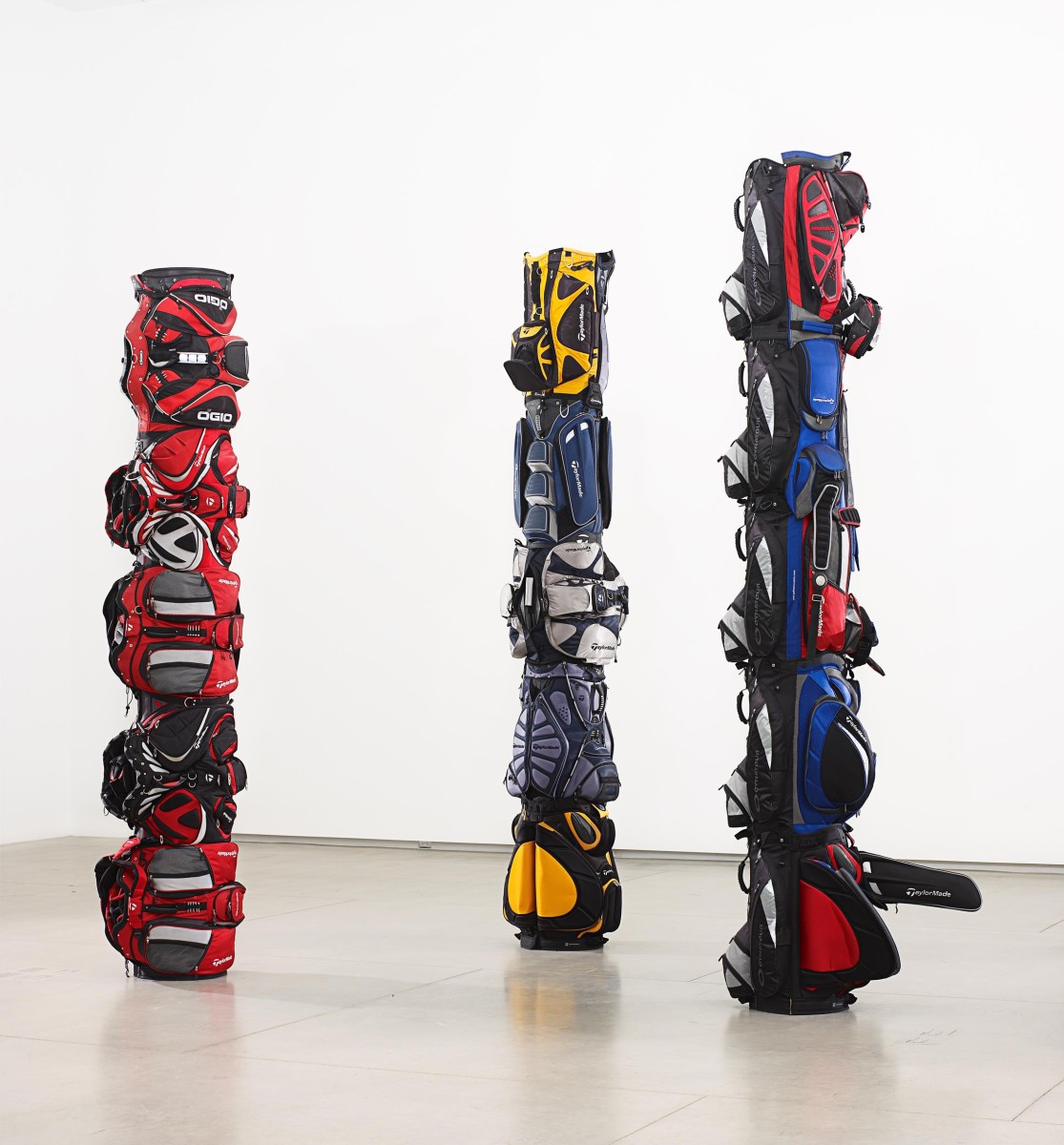
Brian Jungen, left to right, 1980, 1970, 1960 (2007). Polyester, metal, painted wood on paper sonotube, 396 x 122 x 91 cm each. Courtesy of the artist. Collection of the Art Gallery of Ontario. Purchased with the assistance of The David Yuile and Mary Elizabeth Hodgson Fund, 2007; Promised Gift of Rosamond Ivey; Gift of Michael and Sonja Koerner, 2018, Toronto. © Brian Jungen. Photo: Sean Weaver/Art Gallery of Ontario.
Sometimes the deceptively simple concepts behind the works in Brian Jungen Friendship Centre betray their much deeper meaning. Take the five works titled 1960, 1970, 1980, 1990, 2000. Casually dubbed “tube stacks” by Brian Jungen, each of these works is constructed from golf bags stacked around a large cardboard tube to resemble the totem pole carvings created by Indigenous peoples of the Pacific Northwest.
Looming tall over the exhibition, these works were created when Jungen became curious about land use in Vancouver. During his time living and working there, he noticed that several Indigenous communities had struck land lease deals, allowing developers to build golf courses on what was once tribal land.
This had strong echoes of the Oka Crisis, dating back to 1990. In this instance, a court decision granted a developer permission to expand a golf course onto disputed Mohawk territory just outside the town of Oka, Quebec. The result was a long protest that shed light on the land-use issues facing First Nations People across the country – an issue that still lingers today.
With all these connections between Indigenous territory, land use and golf courses, Jungen’s choice to use golf bags as a sculptural medium seems apt – but what’s the reason for naming each piece after a decade? In his research, Jungen noticed that since Indigenous Peoples were given the right to vote in 1960, every decade has seen a defining issue that shaped Indigenous–Crown relations in Canada. From the Sixties Scoop to the closure of the last residential school and the Truth and Reconciliation Commission (TRC), each decade—and each totem bearing its name—holds a unique meaning.
Get a closer look at these striking sculptures and listen to the artist’s take on the significance behind these towering works in the video below.
Admission to the AGO Collection and all special exhibitions is always free for AGO Members, AGO Annual Pass holders and visitors 25 and under. For more information, please visit the website.
Are you an AGOinsider yet? If not, sign up to have stories like these delivered straight to your inbox every week.
Generous Support
Generous Support
Generous Assistance
Generous Assistance
Government Partner
Government Partner

